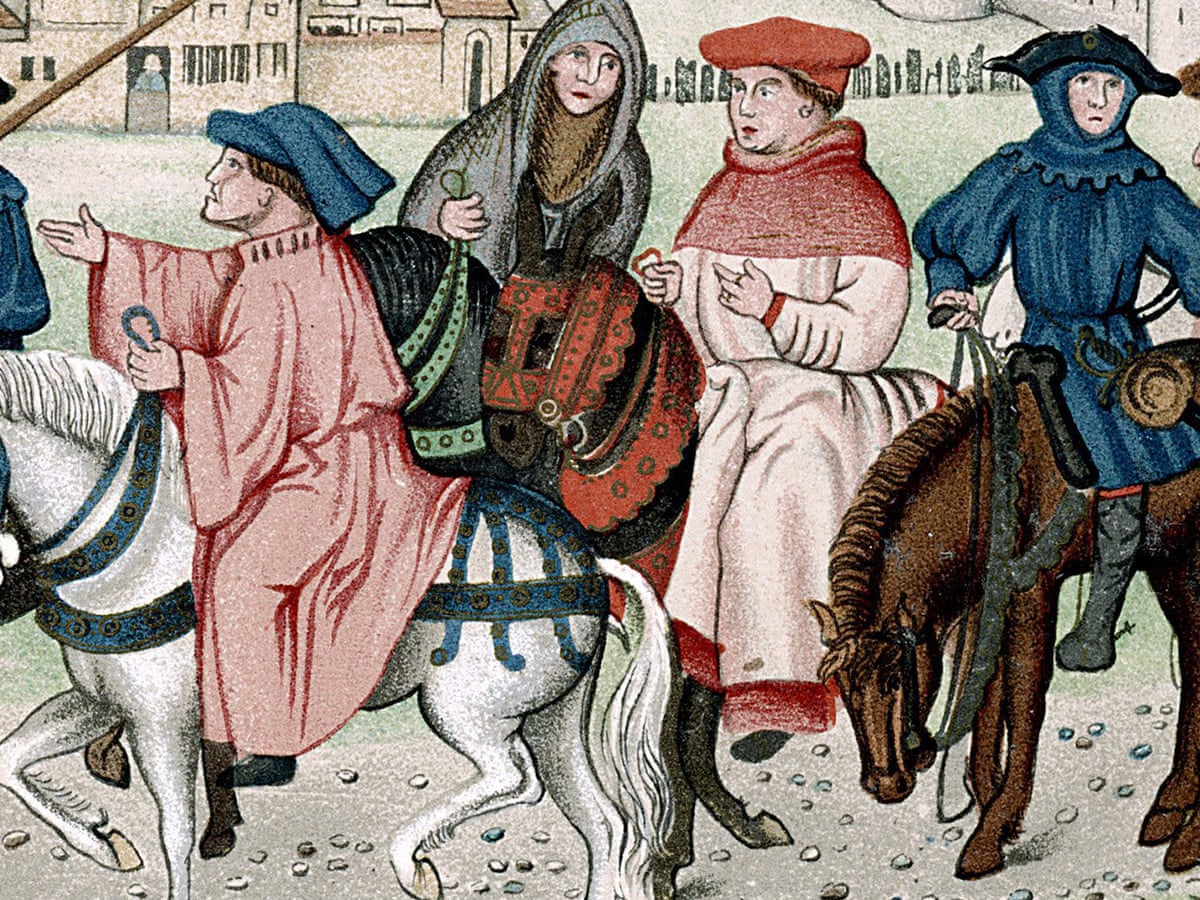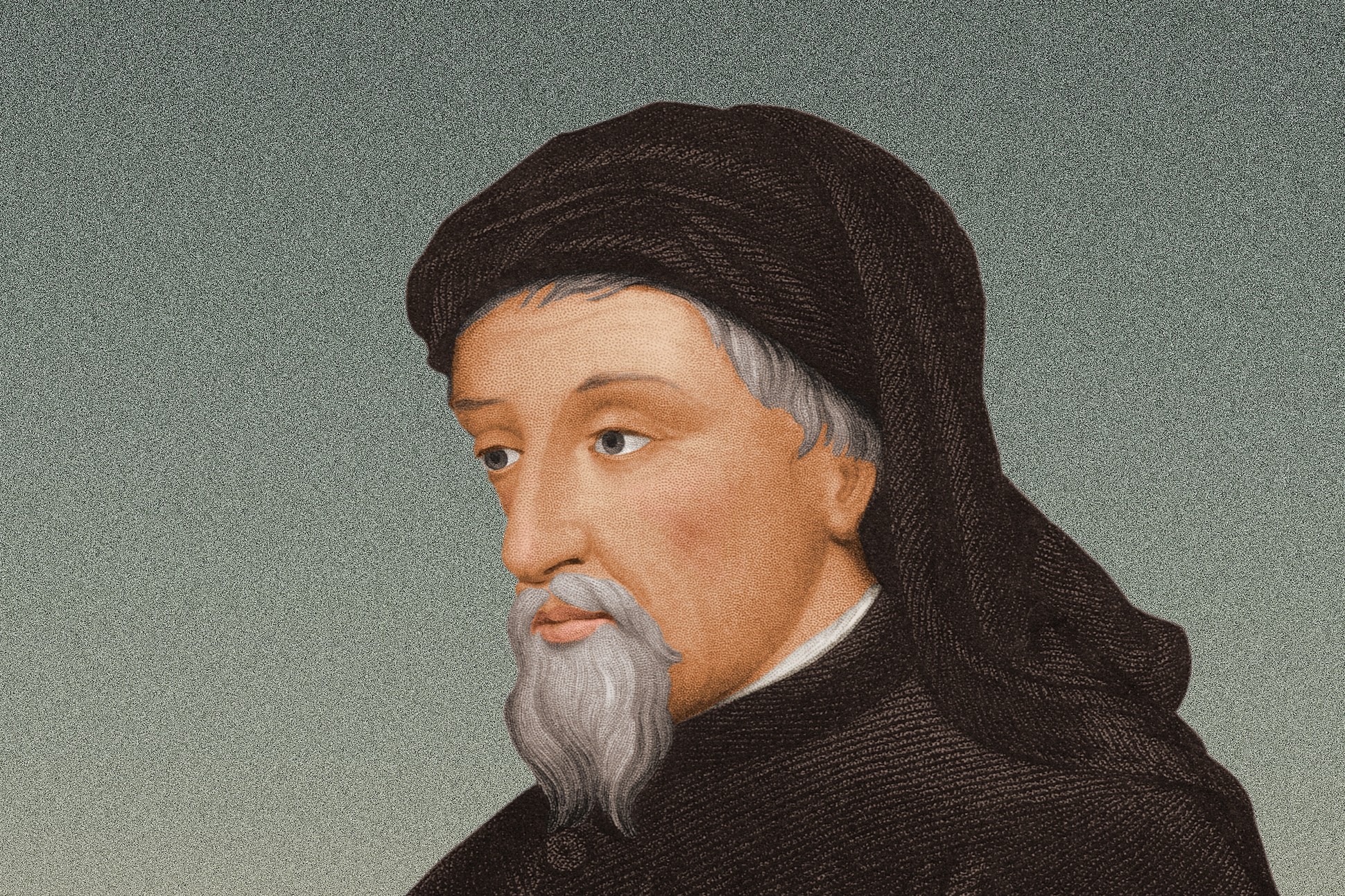By Maria-Nefeli Andredaki,
If you’re a fan of knights and fair maidens, dragons, castles, the one and only Morgan Le Fay and medieval literature in general, you might be already familiar with the 14th century author Geoffrey Chaucer, also known as “the father of English Literature” by many.
One of Chaucer’s most prominent works is the Canterbury Tales, a collection of stories shared among a diverse group of thirty pilgrims who decided to go on a journey to pay their respects to Saint Thomas Becket. During their journey and in order to entertain themselves, each pilgrim shares something about themselves, along with a story. Though Chaucer distances himself from his characters’ opinions, writing in multiple parts that he is not responsible for their actions and beliefs (while being the one who writes them), even inviting his audience to skip certain parts of his story that are offensive, we cannot overlook how brave and progressive some of these characters are for the period in which Chaucer wrote them.
Now, in order to focus on the feminist aspect of the Tales, we will need to take a closer look at The Miller’s Tale and The Wife of Bath.
Starting with The Miller’s Tale, a miller begins narrating the story of young Alison and her much older husband John, who is a carpenter. The story is considered to be a parody of the Virgin Mary and Joseph the carpenter, in the sense that Alison is anything but faithful. You see, because Alison is extremely young, she gets the attention of other men, specifically Nicholas, an astronomy student, and Absolon, a parish clerk. Alison is also attracted to young Nicholas, who, with the help of his charms, convinces old John that Noah’s second flood is coming and to save himself, he should strap bathtubs on the roof of his barn and sleep there. While John sleeps on the roof, Nicholas slips into Alison’s bedroom and sleeps with her. Absolon tries to woo Alison with serenades outside her window and at the end, asks her for a kiss. However, because it was dark outside, instead of offering her lips, Alison tricks Absolon into kissing her “behind”. What ensues is a chaos of Absolon’s revenge gone wrong and John’s humiliation as he falls from the roof, breaking his bones and screaming that the flood is upon them. Moral of the story? Well, the miller-narrator prefaced his tale by saying that his wife’s affairs were none of his business. Even if that is too bold of a claim, Chaucer illustrated the consequences of a man abusing his masculine privilege to trap into marriage a barely legal (for today’s standards at least) young woman, that could very well pass as his granddaughter. It is only natural for two young people to be attracted to each other and, in Alison’s case, her adultery is not only justified or excused, but supported by John’s utter humiliation.

The tale of the Wife of Bath is my personal favorite. The wife, in her prologue, identifies herself as a professional wife, with a score of five husbands, three good and two bad. For her, what constitutes a good husband is fortune and old age and what constitutes a good wife is the ability to take advantage of those traits for her own pleasure. The wife of Bath boldly claims ownership of her body and sexuality and calls for other women to follow her example too!
In regards to her tale, the wife narrates the story of a knight who broke his code of honor and courtesy and sexually assaulted a fair maiden. King Arthur lets Queen Guinevere decide for his punishment and she gives him one year to find out what it is that women want most. If he does not achieve that, he will be given the death penalty. The knight travels across the land to ask different women for the answer but each of them responds differently. Finally, an old woman promises to give him the answer if he agrees to pay a debt to her and with that, the knight faces the queen claiming that “sovereignty” is what women desire most in the world. The knight is free of his punishment but the old lady, or loathsome hag, asks for his hand in marriage. The knight tries to plead with her, offering all of his material possessions in the hopes of saving his body but she declines. The knight finds himself in the powerless position of someone disregarding his will and abusing him, exactly as he did to his victim.
Both stories are admittedly comedic and definitely unrealistic. They were supposed to generate laughter and create drama among the group of pilgrims, so that they would be entertained along their journey. We cannot however overlook Chaucer’s bravery in condemning the foul actions of men, actions that were even accepted by the general public (i.e. marrying a woman half your age) and allowing his female characters to tell their own story, in their own terms.
Reference
- Geoffrey Chaucer. The Canterbury Tales. Penguin Classics. UK. 2003




